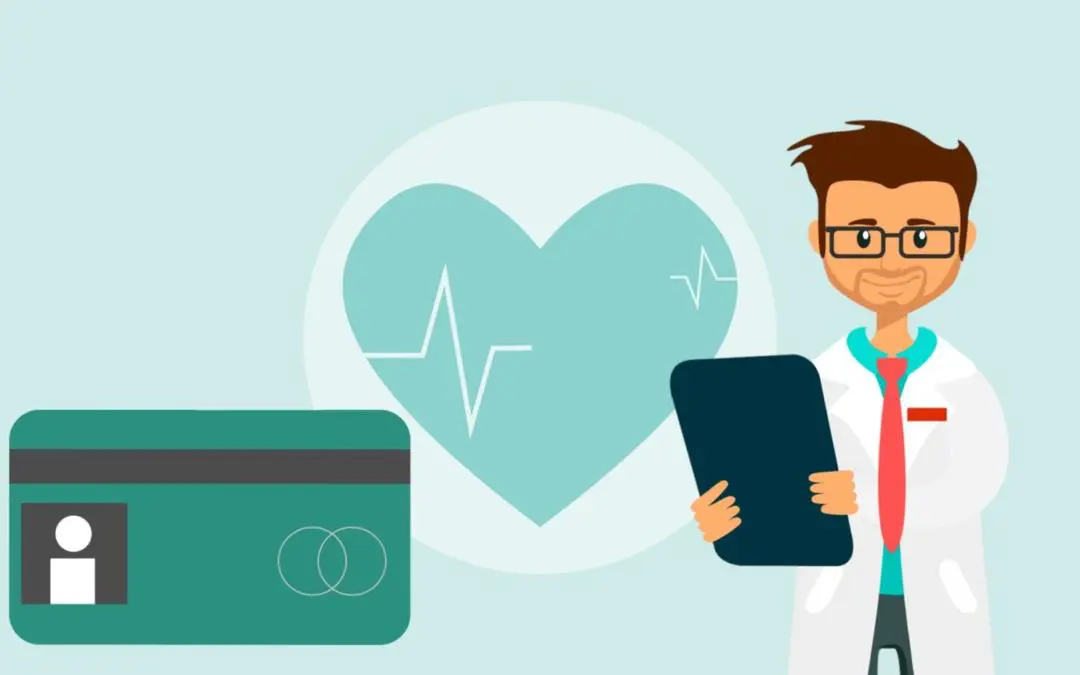Living in France can seem to be all about cards: You need a carte grise for your car, a carte verte for your car insurance, a carte de séjour as a non-European resident… and a carte vitale.
The carte vitale is your personal, credit-card sized, electronic health insurance card for your medical coverage under the French national health care system.
It allows for direct transfer of electronic medical claims (feuilles de soins électroniques FSE) and reimbursement requests (demandes de remboursement électroniques DRE) to the portals of compulsory and supplemental health insurers. The offices dealing with healthcare claims and payments are called CPAM (caisse primaire d’assurance maladie), they are the primary health insurance fund in France.
The carte vitale usually contains the following information
– type, number, and issuance date of the card itself.
– your name(s), date of birth, address, social security number, and a color photograph.
– the name of your regular physician or “medecin traitant”, if you have chosen one.
– information regarding entitlements to benefits, cost exemptions and their validity period, if applicable.
– information on your private supplementary health insurance (mutuelle), if applicable.
– information on work-related illnesses or accidents, if applicable.
– contact details for persons you have named to be notified in the event of an emergency, if applicable.
– your instructions for organ donation in case of death.
If your dependents, children or spouse, are insured with you, their data will also be contained on your card.
The carte vitale does NOT contain information about the general situation of your health or your medical treatments.
By the way: the carte vitale can also be used as an ID card outside the healthcare sector, for example for identity checks by the police or as proof of identity when voting in political elections.
History of the carte vitale
The carte vitale was introduced as an electronic chip card in 1998 to allow a direct and automated settlement of costs with the healthcare branch of the social insurance system. It was meant to ensure faster processing of claims and payments as well as lower personnel costs for health insurance companies. In 2008 the carte vitale 2 with a picture of the card holder and other additional information was introduced.
How to get your carte vitale
The carte vitale is issued free of charge to any French citizen or legal resident over the age of 16. However, whereas French citizens receive their card automatically, foreign nationals must apply for it or otherwise be entered into the system.
You are eligible for a carte vitale if you have a visa allowing you to work in France or if you are residing in France on a legal and stable basis. If you work for a French employer, he or she will usually take care of your application. If you are self-employed, you are automatically entered into the French healthcare system at the time you register your business.
If you don’t work or are retired, you will be eligible for your carte vitale after three months of residence in France. You need to apply for your card by completing the Cerfa S1106 form, the “Demande d’ouverture des droits à l’assurance maladie” and sending it to your regional CPAM office, together with all required supporting documents.
The exact number and type of required supporting documents will vary according to your situation, but in most cases you will need your passport and birth certificate, proof of legal residency and of housing, as well as information on your French bank account. If you have children under 18, you will need to complete an additional form to add them to your coverage, providing their documents as well.
After you’ve applied for your carte vitale
After you’ve sent in your application, you will just need to wait. Processing times may vary. If you have not heard anything two months after you sent your application, contact your regional CPAM for an update. Be prepared to deal with requests for additional documents or even for documents you’ve already sent in. Sometimes files can get lost so it’s always a good idea to keep copies of everything and never, ever send original documents anywhere by mail.
Once your application has been accepted, you will receive a document confirming your healthcare rights called “Attestation d’ouverture de droits”. This document will contain your social security number or “numéro de sécurité sociale”. The letter will also include the form “Ma nouvelle carte vitale” with which you can apply for your physical card.
While you are waiting to receive the physical card, you can get your health expenses reimbursed by presenting the “attestation d’ouverture de droits”. You can now cancel the private health care insurance policy you had to have for your visa or turn it into a top-up health insurance, a “mutuelle”.
Note that to open your personal account on Ameli you will need to wait for the physical carte vitale, because you will need some of the additional numbers on it.
How to use your carte vitale
Billing for medical services
When using any medical services, you present your carte vitale to the service provider (doctor, pharmacist, hospital, etc.). They will read the card electronically and transmit information on the services provided to CPAM.
If you have private supplementary health insurance (“mutuelle”) and have made this information available to CPAM, the data is also automatically sent to your mutuelle. The costs are then reimbursed automatically, both for the part covered by CPAM and for the part covered by your mutuelle. This applies both to cases in which you pay the costs initially and are reimbursed afterwards (tiers garant) and to cases where the service provider is paid directly by the insurer(s) (tiers payant). Reimbursement from CPAM should usually take place within a week.
If you don’t have your carte vitale
If your card is lost, stolen, or defective, you can present a printed-out copy of your social security attestation (attestation de droits) in order to get medical services. This can serve as proof of insurance, but it does not enable automatic registration and forwarding of information to CPAM. In this case the service provider will complete a treatment confirmation (feuille de soins), which you will then send to CPAM (and your mutuelle) in order to be reimbursed.
Medical coverage when traveling
The carte vitale can only be used in France. If you want to travel to other European countries, you should request the “carte européenne d’assurance maladie” (CEAM), the European Health Insurance Card (EHIC). You will be sent a separate plastic card, valid for two years. Each beneficiary, including co-insured children, requires their own EHIC. If time is short, you can also download the EHIC as an attestation and print it out on paper.
—————————–
How we can help
In theory it is very easy to apply for healthcare coverage in France. In practice, depending on your affinity for French bureaucratic processes, the application may turn out to be a real pain. We offer a complete Healthcare Setup package where we help you put together your application pack including all necessary tasks and follow-ups until you receive your carte vitale in the mail.
If we are assisting you with a Micro Entreprise setup, healthcare coverage setup is also a part of that process. Contact us to find out how we can assist you.
—————————–
French healthcare glossary:
PUMA: protection universelle maladie.
Puma guarantees to any person working or regular, stable resident in France the right to be paid for his health costs throughout life.
CPAM: caisse primaire d’assurance maladie.
CPAM manages the rights of those entitled to social security benefits including healthcare, processes claims forms, developsprevention policies, and so on. CPAM has regional offices in each department and in the overseas territories.
Ameli: assurance maladie en ligne.
Ameli is the online platform for CPAM with a website and an app offering access to the French health insurance system and its services. Ameli allows you to check your reimbursements, edit your personal information, ask questions, report loss and reorder a carte vitale, apply for a European Health Insurance Card (EHIC) and more.
Helpful Links
Cerfa S1106 in French: “Demande d’ouverture des droits à l’assurance maladie”
or English: “Application for membership in the French health care system”
Information about CPAM and its offices in all departments.
Form to add children to your coverage in French: “Demande de rattachement des enfants mineurs”
or English: “Application to add minor children”
You might also be interested in…
All articles by: Gabriele





